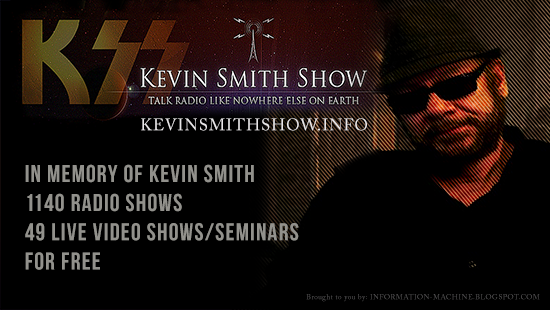Description:
Mary K. Greer’s discussion highlights tarot’s evolution from a 15th-century card game to a cornerstone of Western esotericism, particularly through the Golden Dawn.
Its archetypal imagery, intuitive readings, and ritual applications offer tools for self-discovery and manifestation.
Greer’s approach blends respect, flexibility, and personal engagement, making tarot accessible for both spiritual and practical purposes. The interview reflects shared roots with Mishlove in the 1970s human potential movement, underscoring tarot’s enduring relevance.
Bio:
Mary K. Greer has been studying and teaching tarot for the last half century. She is author of eleven books on tarot and on magic. They include Tarot for Your Self: A Workbook for Personal Transformation; Women of the Golden Dawn: Rebels and Priestesses; The Essence of Magic: Tarot, Ritual, and Aromatherapy; and Mary K. Greer’s 21 Ways to Read a Tarot card. She has taught tarot for 11 years at the New College of California. She has a master’s degree in English literature from the University of Central Florida, where she first taught tarot in 1974.
Here she describes the history of tarot cards and the various ways they can be used both for personal growth and to help others. In particular, she focuses on the esoteric tarot system used by the Order of the Golden Dawn. Many examples are illustrated from her personal experience.
Timestamps:
00:00 Introduction
04:29 The Order of the Golden Dawn
09:26 History of tarot
19:25 The French tarot tradition
22:31 The major and minor arcana
24:03 Tarot spreads
28:33 Archetypal symbols
31:47 Tarot as a conversation
37:17 Tarot in magical rituals
45:20 Conclusion
(Recorded on June 3, 2025)
Key Points
-
Background and Expertise
- Mary K. Greer, a leading U.S. tarot teacher, has a master’s in English literature and began teaching tarot in 1974. Her great-grandmother read cards near New Orleans, possibly Lenormand.
- Author of books like Tarot for Yourself and Mary K. Greer’s 21 Ways to Read a Tarot Card, with over five decades of passion for tarot.
-
Tarot’s Historical Context
- Originated in northern Italy (1420–1440) as a card game with hand-painted decks used in courts for social interaction, often as wedding gifts or poetry-making games.
- By the late 19th century, tarot became central to Western esotericism via the Order of the Golden Dawn (founded 1888 by Freemasons), linking tarot to Kabbalistic symbols, Hebrew letters, astrology, and the Tree of Life for initiatory rituals.
-
Golden Dawn’s Influence
- The Golden Dawn restructured tarot, placing the Fool first (instead of last) and adjusting Strength and Justice numbering. This system underpins the Rider-Waite-Smith (1909) and Thoth (1945, by Aleister Crowley and Lady Frieda Harris) decks.
- Cards correspond to astrological signs, planets, and Kabbalistic concepts, forming an elaborate system of correspondences.
-
French Tarot Tradition
- The French Marseilles deck, favored by Alejandro Jodorowsky, uses Major Arcana for spiritual insights and Minor Arcana for mundane matters. Some traditions restrict readings to specific days (e.g., Major Arcana on Sundays).
-
Major and Minor Arcana
- Tarot decks have 22 Major Arcana (trump cards, major secrets) and 56 Minor Arcana (four suits, minor secrets). “Arcana” (secrets) is a Golden Dawn term, unlike the French “triumphs.”
-
Tarot Spreads and Readings
- Readings range from single-card draws to spreads like the Celtic Cross (past, present, future, unconscious influences). Spreads address relationships, decisions, or growth.
- Greer emphasizes intuition, with cards interrelating to form a narrative. She pioneered self-readings with Tarot for Yourself, encouraging dialogue with cards or others.
-
Archetypal Symbols
- Tarot’s vivid imagery (e.g., Hanged Man, Tower, Devil) embodies Jungian archetypes, reflecting universal human experiences in myths, dreams, and stories, evoking deep insights.
-
Tarot in Magical Rituals
- Used in rituals like “manifestation spreads” (handpicked cards for desired outcomes) or altars with cards representing elements (fire, earth, air, water) or spirit beings.
- Greer warns of unintended consequences, citing Mishlove’s Justice card ritual and her own mixed results helping her daughter secure apartments.
-
Intuition and Psychic Abilities
- Effective readings tap empathy, intuition, and psychic abilities (clairvoyance, telepathy, precognition). Greer sees these as a continuum, with intuition as a brain mechanism and psychic abilities as sensory experiences beyond environmental cues.
- She advocates describing card imagery without preconceived meanings to spark intuitive insights, embodying the card’s perspective (e.g., “I am sitting on a horse, feeling…”).
-
Philosophy and Approach
- Greer emphasizes respect for tarot, allowing flexibility (e.g., breaking rules like buying one’s first deck). She values lifelong learning and adapting tarot for personal growth.
- While AI readings are available, human connection remains vital for empathetic, experienced insights.


































